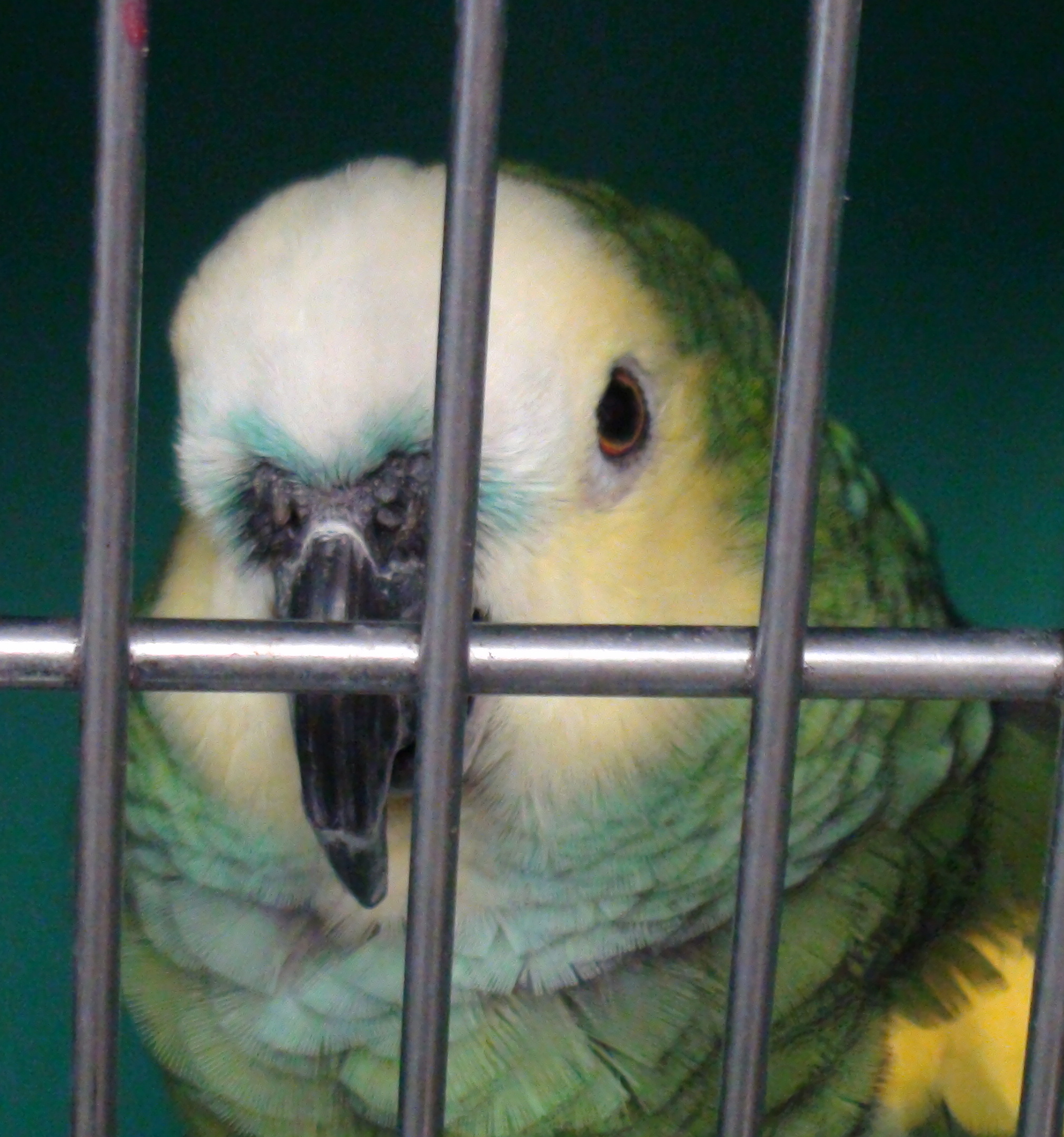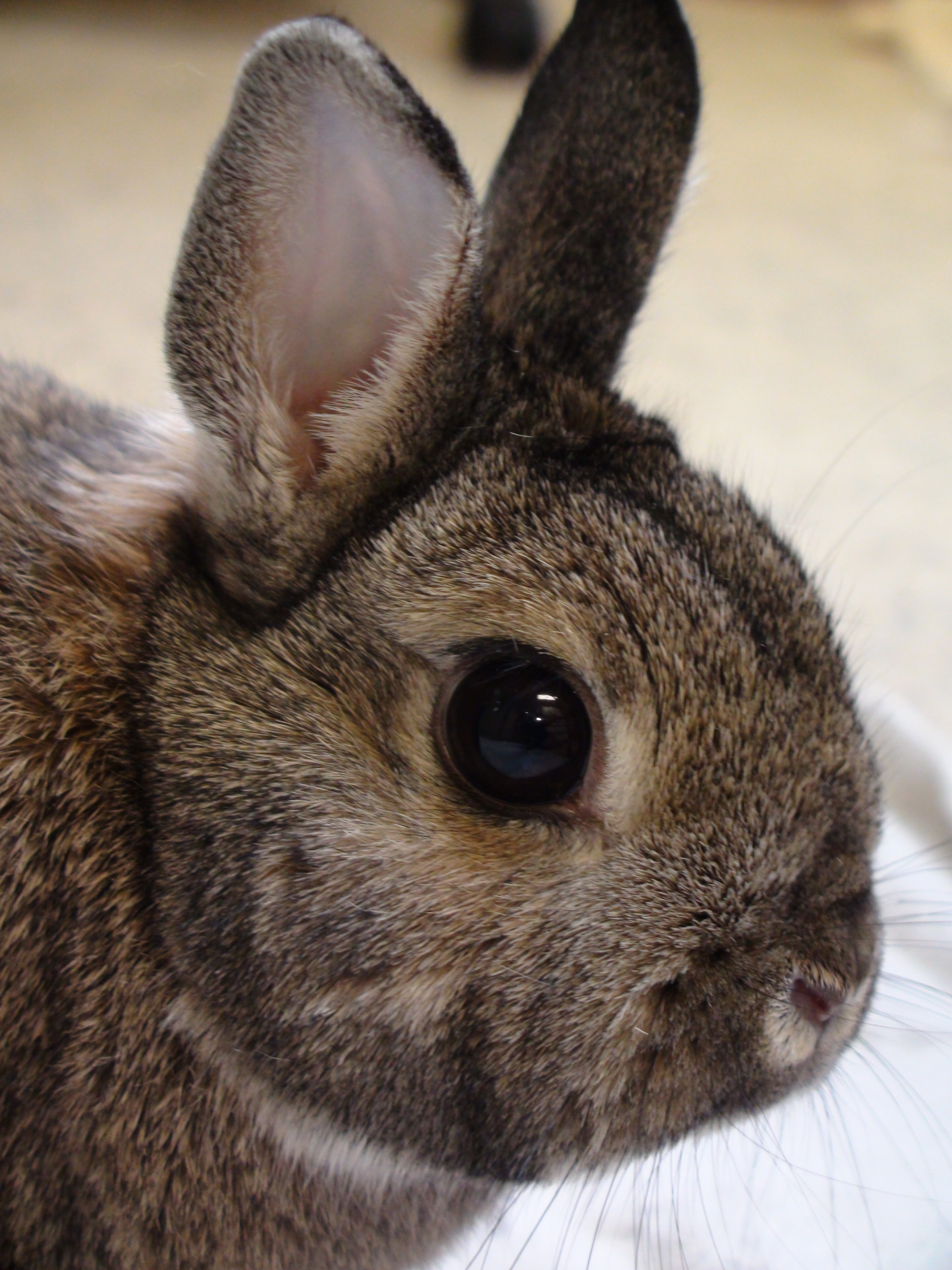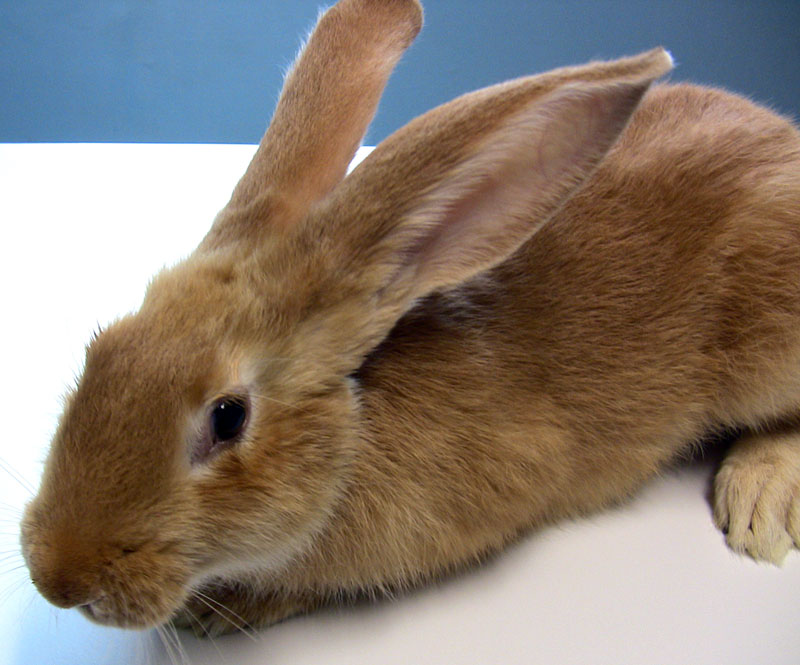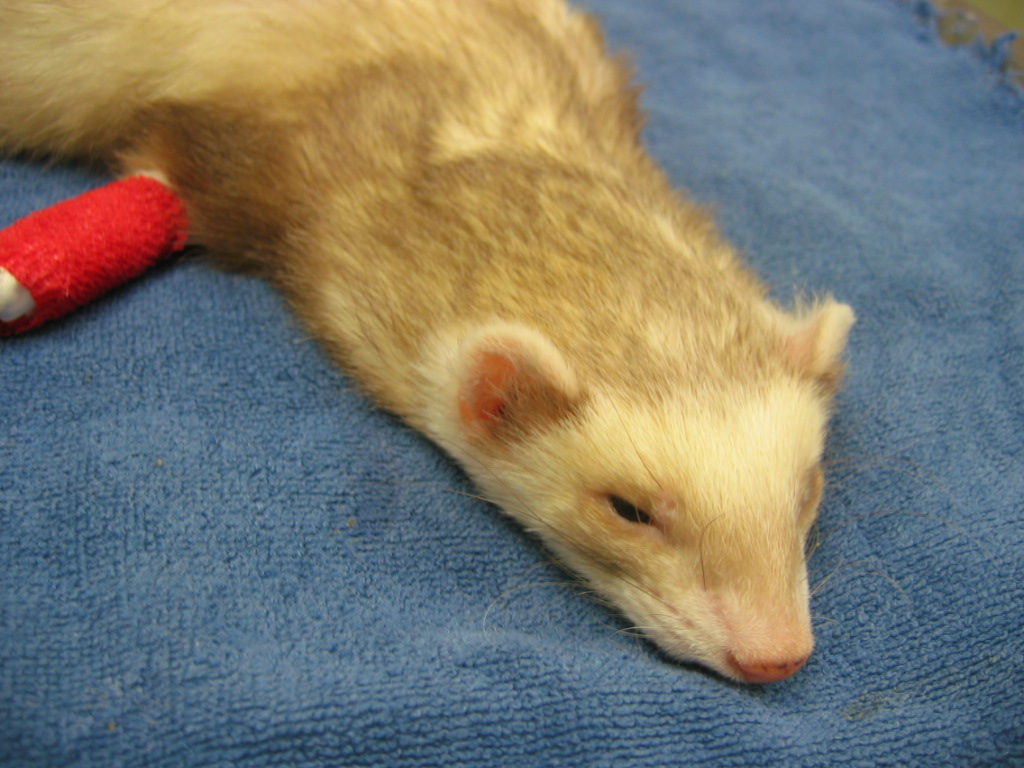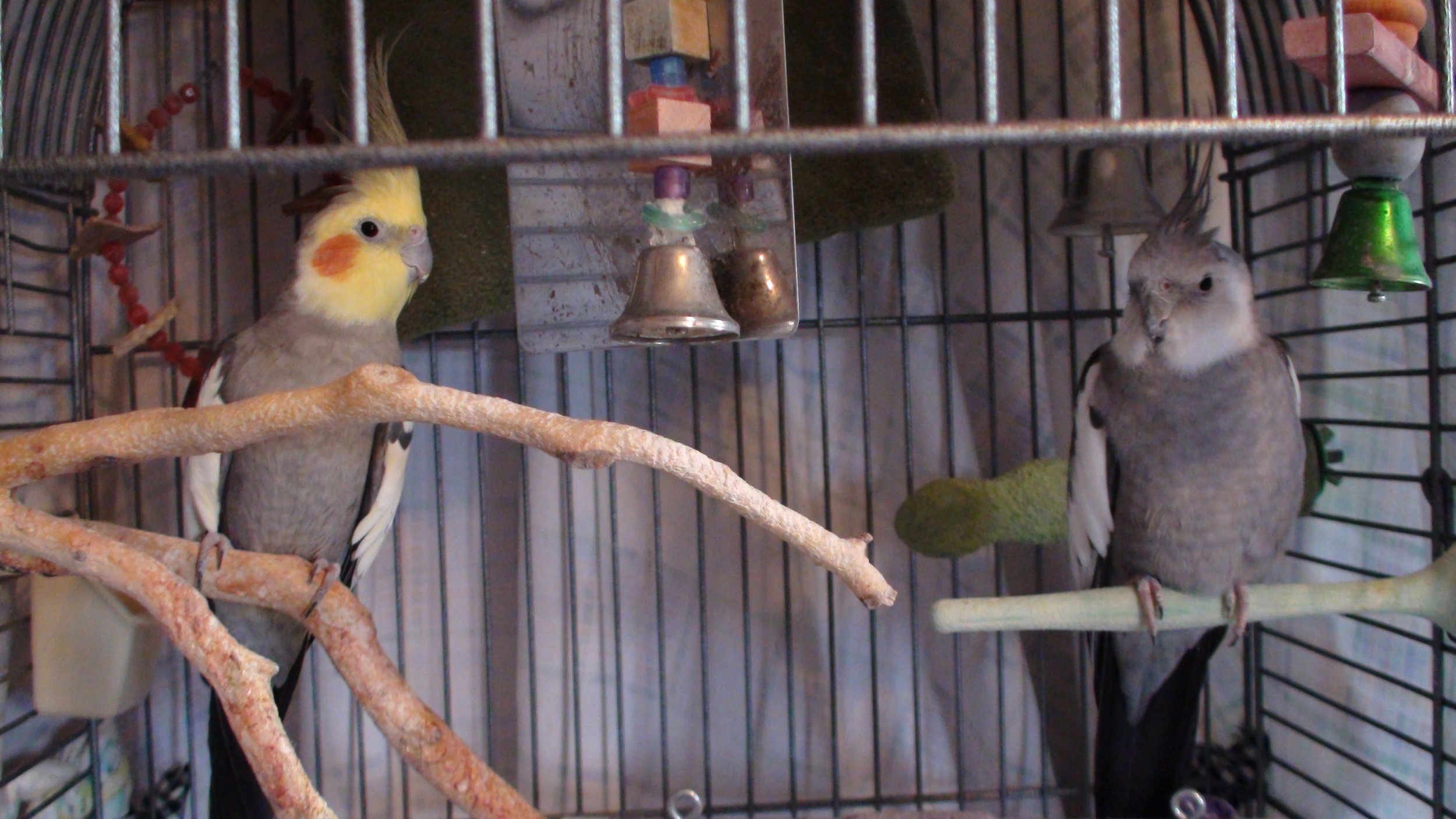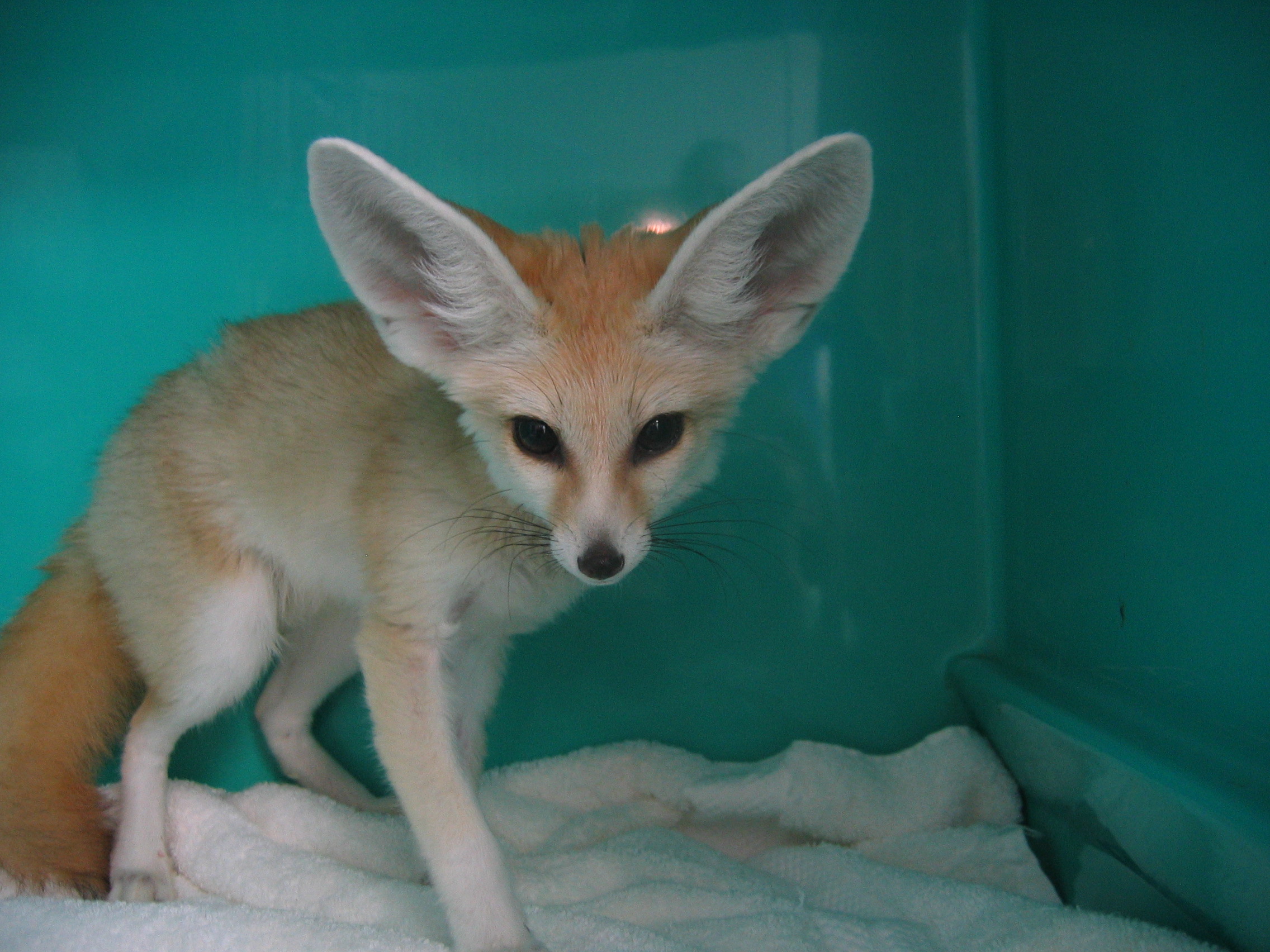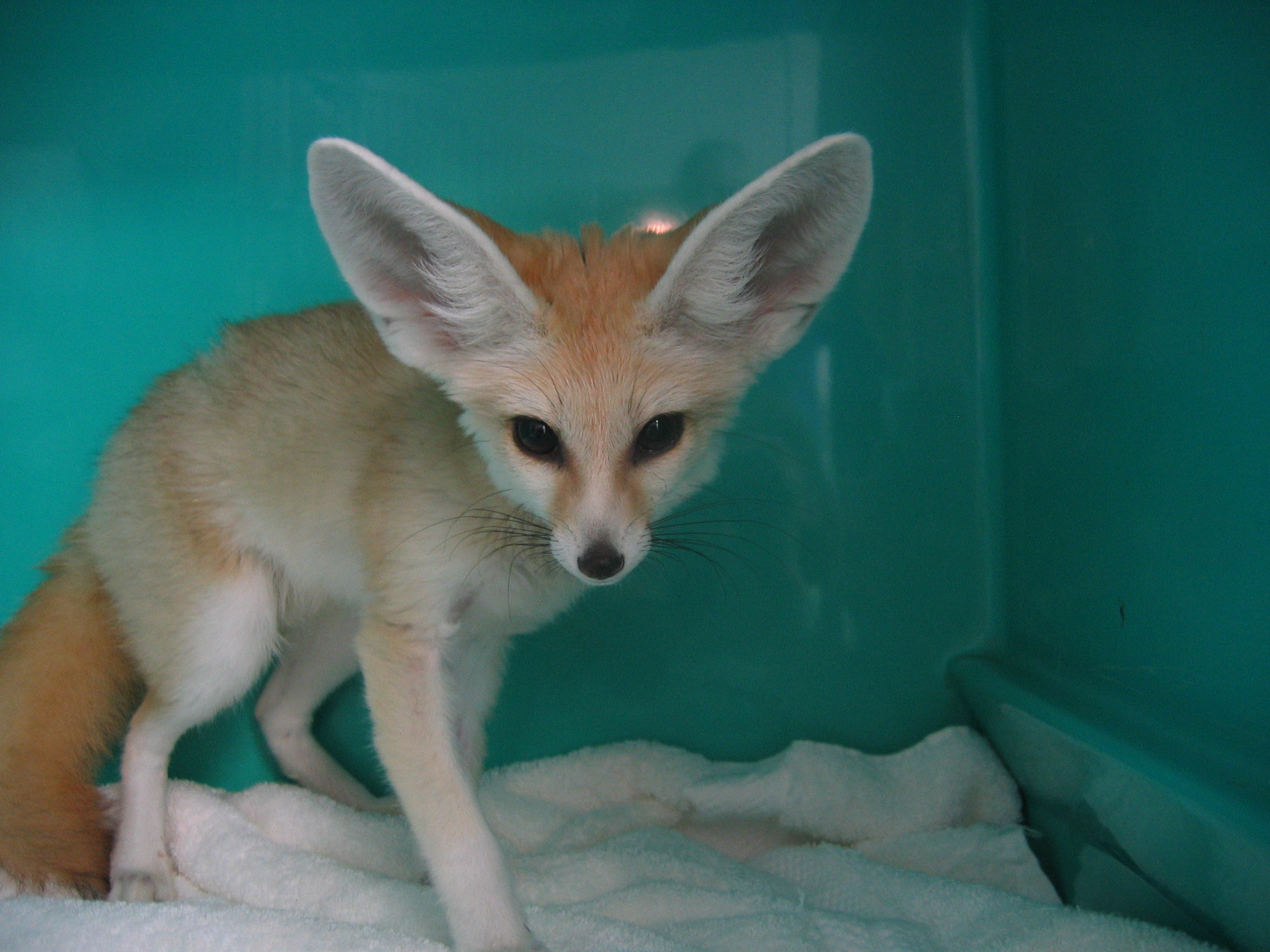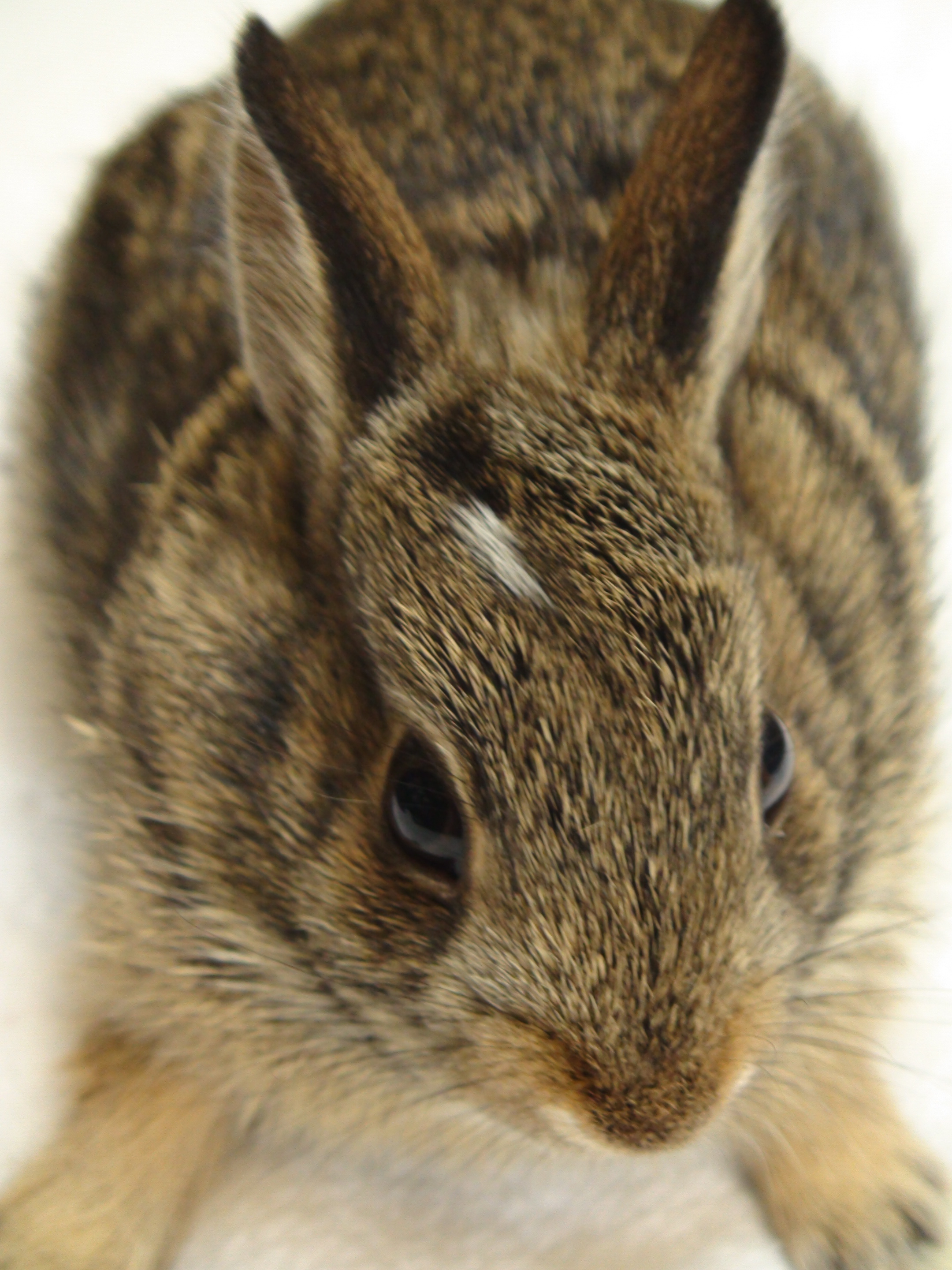Teaching in Portugal
 This past summer, Dr. Lennox taught a rabbit procedures lab in Portugal to students eager to improve their exotic animal medical and surgical skills. We used rescue rabbits to learn how to place catheters, take blood samples and place an endotracheal tube to increase safety during surgery. At the end, the rabbits returned to their rescue homes safe and sound.
This past summer, Dr. Lennox taught a rabbit procedures lab in Portugal to students eager to improve their exotic animal medical and surgical skills. We used rescue rabbits to learn how to place catheters, take blood samples and place an endotracheal tube to increase safety during surgery. At the end, the rabbits returned to their rescue homes safe and sound.
The course organizer, Dr. Filipe Miguel Reis Martinho sent these pictures from the lab, and we thought we'd share them. It's great to see the increase in interest in exotic animal medicine not just in the US, but all over the world!
Dr. Xavier Update
We have an unfortunate incident to relate regarding Dr. Xavier, the paralyzed rabbit adopted by our technician Mandy (Meet Our Newest Doctor). Last week he and Mandy were involved in an auto accident while Mandy was driving with him to work. The car was totaled, and Mandy was bruised by the airbag, but Xavier added an additional burden to his health condition-a broken femur!
 Mandy had him in a carrier and buckled with a seatbelt, but it got us to thinking about pet car safety, and how we can do absolutely everything we can to keep our exotic pets safe in the car.
There are plenty of websites on pet car safety for dogs, including seat belt harnesses and carriers that snap into a secured base, similar to a baby car seat. We found some great tips here:
http://Barkbuckleup.com
http://www.bigappleherp.com/Safe-Secure-Car-Dog-Carrier
However there isn’t much at all on exotic pet car safety. With this in mind, we offer the following observations, keeping in mind we have no scientific proof of the absolutely best and safest way to transport your exotic pet.
It’s obvious that any unrestrained pet involved in a car accident like Mandy’s, for example a parrot riding on the shoulder, would be killed upon impact. Therefore, a seat-belted carrier seems safest. Dr. Xavier was seat belted in his carrier, but the carrier was oriented longways in the car. We reasoned that during the accident he had longer to go before hitting the front of the cage than if he had been seat belted in sideways.
Also consider the smallest carrier in which your pet can comfortably fit, and pad with large, soft towels. Always belt your pet into the rear seats to avoid contact with front seat airbags.
On a happier note, we expect Dr. Xavier to heal just fine, and we’re glad everyone is OK!
Mandy had him in a carrier and buckled with a seatbelt, but it got us to thinking about pet car safety, and how we can do absolutely everything we can to keep our exotic pets safe in the car.
There are plenty of websites on pet car safety for dogs, including seat belt harnesses and carriers that snap into a secured base, similar to a baby car seat. We found some great tips here:
http://Barkbuckleup.com
http://www.bigappleherp.com/Safe-Secure-Car-Dog-Carrier
However there isn’t much at all on exotic pet car safety. With this in mind, we offer the following observations, keeping in mind we have no scientific proof of the absolutely best and safest way to transport your exotic pet.
It’s obvious that any unrestrained pet involved in a car accident like Mandy’s, for example a parrot riding on the shoulder, would be killed upon impact. Therefore, a seat-belted carrier seems safest. Dr. Xavier was seat belted in his carrier, but the carrier was oriented longways in the car. We reasoned that during the accident he had longer to go before hitting the front of the cage than if he had been seat belted in sideways.
Also consider the smallest carrier in which your pet can comfortably fit, and pad with large, soft towels. Always belt your pet into the rear seats to avoid contact with front seat airbags.
On a happier note, we expect Dr. Xavier to heal just fine, and we’re glad everyone is OK!
Meet our newest “Doctor”!
Meet Dr. Xavier, our newest clinic addition. He’s a young rabbit, brought in by a Good Samaritan who found him abandoned outside. Besides being covered in fleas and in need of a bath, Xavier has a severe vertebral fracture and damaged spinal cord. His hind limbs are completely paralyzed.
Our head technician, Mandy, has decided to take this special needs guy on and give him a second chance. At this point, he requires a lot of care. He can feed himself and is able to move around a little, but he needs help emptying his bladder several times a day. After a lot of trial and error, Mandy has rigged up a cart for him, and he is currently learning how to use it! Keep an eye on our page for future updates, and perhaps, when he gets used to his cart, you’ll be able to see him scooting around the clinic!
We need a home!
These two Peking Ducks were confiscated by Indianapolis Animal Care and Control as part of a cruelty case. It seems that they were confined in crate so small they were unable to stand up and now their legs are deformed. They have no trouble getting around and are quite happy to have a swim in a baby pool! They’re still fairly young, but it looks like they are a male and a female.

Because of their legs, they would need a home that can handle their special needs. Protection from all types of predators would essential because they can’t run away from danger. If you have room and would like to have some special-needs critters, please give us a call!
Welcome back, Dr. Lennox!
We are back from the Association of Avian Veterinarians annual conference in Louisville, KY. Hundreds of avian and exotic veterinarians from all over the world were there to learn more about medicine and surgery of our special pets. (Hello to our friends from Taiwan, France and Germany, among others!) We learned a lot at the conference, and Dr. Lennox was presented an award for Speaker of the Year for the 2011 conference last year.
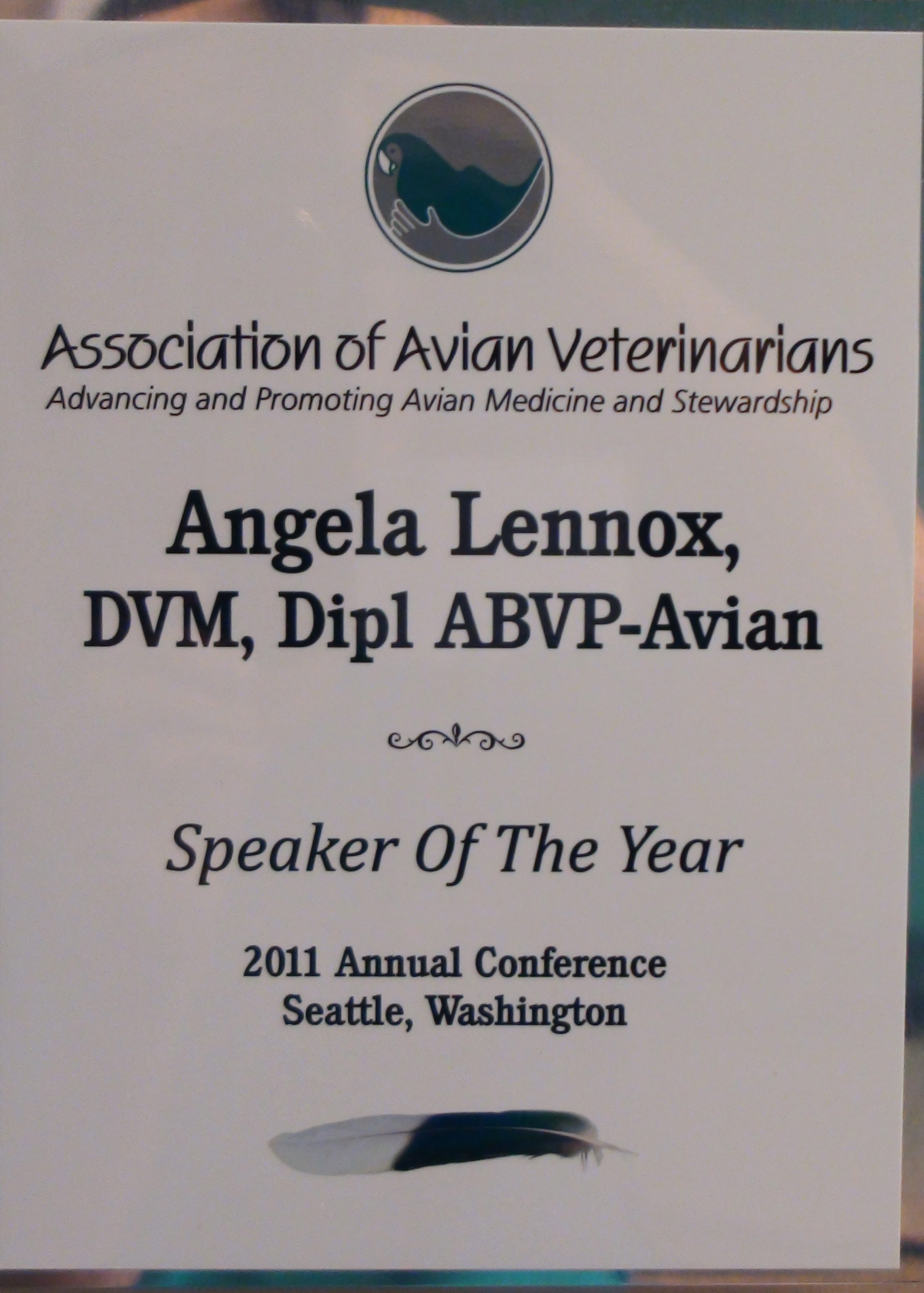
The most exciting part of the 2012 conference for us was a lecture and laboratory we taught on sedation for pet birds. Dr Lennox, our technician Mandy and members from the Healthipet network joined together to teach a class on how to safely sedate parrots for examination and minor procedures. While sedation is not usually required for these procedures, for some very stressed and excitable birds it's a great alternative to general anesthesia. Tim, Robert, Tami and crew from Healthipet in Anderson brought some birds that were just relinquished to the rescue, and our lab participants conducted physical exams, collected diagnostic samples and groomed all 29 of the birds, while learning how sedation is administered and how it works. It was a win-win for everyone.
The lab would not have been possible without Healthipet's collaboration. Please visit their website at http://www.healthipet.webs.com and learn more about the organization, and the many lovely (and recently groomed!) birds available for adoption.
A big THANK YOU to all!
Wildlife Report, Summer 2012
This summer has brought the usual number of injured and orphaned wildlife cases to the clinic, ranging from a tiny 2 g baby hummingbird, to a full-grown injured woodchuck. Our “frequent fliers” appear to be orphaned young rabbits and hungry starlings. We appreciate the efforts of our veterinary extern students who are given primary responsibility for their intake and care while at the clinic (in July special thanks to Kelly and John!). We are also grateful our wildlife rehabilitators show up like clockwork nearly everyday to take over care when we’ve done our part (see the wildlife section of our website for more info http://www.exoticvetclinic.com/pet-owner/wildlife/).

The summer brought an unusually high number of hawks and owls with fractures. This barred owl presented with an open, but relatively simple fracture of his humerus. We were ready to walk out for the day, but the fracture was fresh, the owl seemed strong, and team members were willing to stay. Thanks to the simplicity of the fracture and the fact it had not started to heal, we have our all time clinic record of an 11-minute orthopedic repair! (For orthopedic enthusiasts, this consisted of a single IM retrograde pin with tie-in, two additional external fixator pins and an external fixation rod made of plumber’s putty). Watch this space for an update as he (or she) comes back for weekly rechecks.
Q&A with Our Newest Addition
 Meet Dr. Lindsey Woods, our newest addition! Dr. Woods started her year long internship on July 2nd and has already been a huge help. After her first week here with us, she agreed to sit down for a moment and answer some questions. Check it out!
How did you come to have an interest in exotic animal medicine?
Meet Dr. Lindsey Woods, our newest addition! Dr. Woods started her year long internship on July 2nd and has already been a huge help. After her first week here with us, she agreed to sit down for a moment and answer some questions. Check it out!
How did you come to have an interest in exotic animal medicine?
It all started at about age 5 when people would ask what I wanted to be when I grow up. I always replied that I wanted to become a tiger! As I grew older, I guess I finally came to the realization that I had to choose a different career path, and decided to be an exotic animal veterinarian instead. Slightly more attainable than becoming a tiger!
What are the biggest changes coming from Arkansas and Oklahoma to Indiana!
I expected the climate to be drastically cooler here in Indy, however that has not proven to be the case so far! Indianapolis is a very friendly place, and I really have enjoyed meeting people here. I guess the biggest change for me has been moving from a small town where I have 8 years worth of friends, to a huge city where I knew only one person at first. I’ve been here for about a week now, and I have already gotten to know so many new people! I’m very excited about the new friendships I will make here!
What do you like best about Indianapolis so far?
I have been fishing one time with a new friend of mine, and I was so impressed with how quickly and easily I can get away from the cars and the daily hustle, and almost instantly feel like I’m out in the wilderness. It’s less than ten minutes from my house to the great outdoors, and I absolutely love being able to go fishing right in the middle of this huge metropolitan area!
What are your first thoughts on your first week at the clinic (besides very busy!)
I absolutely love the atmosphere! It’s friendly, comfortable, professional, and VERY efficient! My biggest goal for myself in the next week or so is to get more familiar with where everything is, and how everything works so I can start to keep up with the fast pace and be more productive with our time!
What has been your most unusual or favorite case so far?
My very first day, I worked with my very first primate in private practice! I’ve cared for them multiple times in zoo settings, but a pet monkey is very different than a zoo monkey. I really enjoyed learning the dynamics of the pet/owner relationship from our client, and I’m excited to meet and interact with all the other unique pets I will see here!
Come One, Come All!!
The Avian and Exotic Animal Clinic will close shop on Saturday, June 2nd to attend the First Annual Ferret 500 Show! This American Ferret Association (AFA) Ferret sactioned show will benefit The Five Points Ferret Refuge here in Indianapolis. The show will be this Saturday from 10am to 6pm at the Marion County Fairgrounds. Tickets are $5 for adults, $2 for children under 12. Come and visit us at the show, where we will join the fun and promote ferret wellness and health. There will also be three rings of ferres being judged in different catagories, as well as vendors, a raffle, and contests! There will also be a screening of "Return of the Prairie Bandit", a documentary about the reintroduction of the nearly extinct blackfooted ferret. See the ferret show website for more details. http://www.theferret500.com/ Come by and say hello at our booth and pick up a souvenir. See you June 2nd!
The Heat is ON!!
With the hot weather comes increased risk to some of our exotic pets. All pets can have trouble when the weather becomes warm suddenly, and they have not had time to adapt to the change. However, a few of our exotic pets are more susceptible to heat related illness than others, in particular our guinea pigs and chinchillas.Already this year our clinic has seen two fatalities in exotic pets due to hot weather. One occurred when a sick pet was transported in a vehicle without air conditioning on an unusually hot day. Tip for prevention of heat-related illness: -Keep guinea pigs and chinchillas at temperature 75 degrees and below at all times. If air conditioning is not available, use fans and ice packs to help keep the pet cool. - Allow all pets to adapt gradually to hot weather. If pets are to spend times outdoors, start with 15-20 minute sessions, gradually increasing the time outdoors. -Watch for signs of heat-related illness, including increased rate of breathing, and lethargy Any overheated pet should be cooled by placing cool wet towels around the body, and calling the clinic immediately for further instructions. See the "Emergency Care" link here (http://www.exoticvetclinic.com/pet-owner/emergency-carefirst-aid-for-mammals/) for more instructions.
It Pays to Spay: Why spay my healthy pet rabbit or guinea pig?
It’s easy to understand why pet owners regularly spay pet dogs and cats. But why spay the pet rabbit, especially if she is a single pet? The reason is preventative health care: the incidence of uterine cancer in unspayed female rabbits is up to 75% in certain breeds. Uterine cancer is usually silent until well advanced. This cancer typically spreads to other body organs, especially to the chest cavity. Signs can include uterine bleeding, lethargy, and difficulty breathing. Early spaying is the key to prevention, and costs much less than trying to treat the sick rabbit later. Prevention is simple: spay your pet rabbit as early as 8-10 weeks of life. Older pets benefit from spaying as well. Our clients also find the spayed female rabbit is calmer, uses the litter box better, and is in general a much better pet. So why spay the pet female guinea pig? Most guinea pigs eventually develop ovarian cysts. These cysts are often benign and cause no apparent harm or distress. However, in a certain percentage of pets, cysts become very large and cause discomfort. Guinea pigs with large painful cysts are often less active, eat less, and lose weight. Pet guinea pigs can be spayed (removal of the entire uterus and ovaries), or in younger animals can have ovariectomy (removal of the ovaries alone), which is a simpler, quicker procedure with an improved recovery time. Questions about spaying your pet rabbit or guinea pig? We would be happy to help. Call the clinic at 317-879-8633.
WATCH OUT! THEY’RE EVERYWHERE!!!
 "The Invasion of the Orphaned Baby Birds: Coming Soon to a Backyard Near You!"
"The Invasion of the Orphaned Baby Birds: Coming Soon to a Backyard Near You!"
Spring is here a bit early this year, and the first of the baby birds have already appeared in our clinic! Every year, we hear of hundreds of young birds found and rescued outside. While some of them really are in distress and need help, most are not. Babies can be divided into “nestlings” (still in the nest, downy feathers, not able to fly or walk well) and “fledglings” (all adult feathers, look like miniature adults, walking well, but just learning to fly). Here is a quick guide to help determine when to get involved: 1. Nestlings that have fallen from the nest, but seem healthy otherwise. These may have fallen out accidentally, been blown out, or rarely, tossed out by parents. Quickly try to locate the nest, which will be nearby, and place the bird gently back into the nest. Parents will not reject young that have been touched by humans-that’s a myth! If the bird is found out of the nest multiple times, then it’s time to rescue. Note: if the nest has been blown out, you can attempt to nail a board with a shallow container to a tree branch and replace the nest in it as best as you can. The parents only need it for a short while until the baby birds fledge 2. Nestlings that have fallen from the nest, but seem weak or appear to be injured. These should be rescued. 3. Fledglings found hopping about in the yard, and appear healthy but can’t quite fly away. These are “teenager” birds that are out on their own, learning how to fly. The parents are nearby watching, and will help the young the best they can. Leave these birds alone. Interfering will not help the bird learn. 4. Fledglings that appear injured. These should probably be rescued. So how do you rescue the baby birds that really need help? Do not try to raise the birds yourself, as it’s tricky, and actually against federal laws that protect our songbirds. All injured or orphaned birds should be taken to one of our local licensed wildlife rehabilitators or dropped off at our clinic during regular business hours. See the “Wildlife” link on this website for more details.
Easter Bunnies
Easter means a lot of things to our friends, but to the members of the House Rabbit Society, the time period just after Easter marks the annual rise in the numbers of pet rabbits relinquished to rescue. The reason is an increase in impulse buying of “Easter Bunnies” by families who aren’t prepared to care for an adult rabbit.
.
Our clinic and the House Rabbit Society think rabbits are excellent pets, but all owners should research the ins and outs of caring for a pet that may live 7-8 years or even longer. If you are thinking about a pet rabbit, and have questions, please give us a call, Avian and Exotic Animal Clinic: 317-879-8633, or contact a member of the Indiana House Rabbit Society at indianahrs.org We will be glad to guide you through the process, and help welcome your healthy and happy pet rabbit!
.
Avian and Exotic Heros: our Blood Donors
Just like in humans, our exotic patients sometimes require a blood transfusion. Unlike humans, dogs and cats, blood banks do not store blood for pets such as birds, rabbits, ferrets, guinea pigs and rodents. For these special patients, we keep a list of exotic “heros” whose owners are willing to bring them to the clinic on a moment’s notice to donate life saving blood. Donating blood is minimally risky to the donor, and often the difference between life and death for the recipient.The Avian and Exotic Animal Clinic would like to thank our exotic heros!
Exotic Animals and the Law: What are Indiana’s laws?
Each state regulates pet ownership of exotic animals. Indiana’s laws are relatively lenient, considering some states even ban ownership of pets such as the ferret. Indiana has no laws regulating ownership of common exotic animals, such as pet birds, domestic rabbits, guinea pigs, ferrets, and rodents. Current laws require permits for venomous snakes, exotic felines, and wildlife: Summary of Law: All persons who possess certain wild animals must obtain a permit for each animal they possess. A wild animal possession permit is required for Class I animals (eastern cottontail rabbit, gray squirrel, fox squirrel, southern flying squirrel) Class II animals (beaver, coyote, gray fox, red fox, mink, muskrat, opossum, raccoon, skunk, weasel) and Class III animals: wolves (purebred), bears, wild cats (excluding feral cats), venomous reptiles and crocodilians (at least 5 feet long).
In order to comply with Indiana law, owners who would like to bring any of these regulated animals for veterinary care can do so, with the proper up-to-date permit in hand. (One exception: our clinic will not see venomous reptiles). It should be kept in mind that not every animal in the above list makes a good pet. If you are considering an unusual animal as a pet, please give us a call beforehand. We would be happy to share what we’ve learned from our clients over the years.
Hi ho, it’s off to conferences we go!
How do veterinarians improve skills and learn the newest and latest on pet care after graduating from school? By accumulating CE, or continuing education hours. Most states require veterinarians to obtain a certain amount of CE. In Indiana, veterinarians are required to obtain 40 hours every two years.How do exotic veterinarians find CE about our special species? Fortunately, there are now many conferences with lectures on medicine and surgery of birds, reptile, rabbits, ferrets, rodents and much, much more. The largest veterinary conference in the US is the North American Veterinary Conference, in Orlando every January. This conference hosted 6000 veterinarians this year, and provided exotic animal lectures all day for the entire 5-day conference. If you are interested, the entire scientific program can be viewed at: www.navc.com/session. More info on our doctors’ CE schedules can be found under the “news” link.
We want your pet on our Facebook page!
We’re beginning a collection of pictures of our favorite rabbits, ferrets, birds, reptiles, guinea pigs, rats and other friends on our Facebook page. Please send us yours! If you have a favorite image of one of our patients, please send it to us at exoticvetclinic@gmail.com. Don’t forget your pet’s name and a little caption to go with it.


















